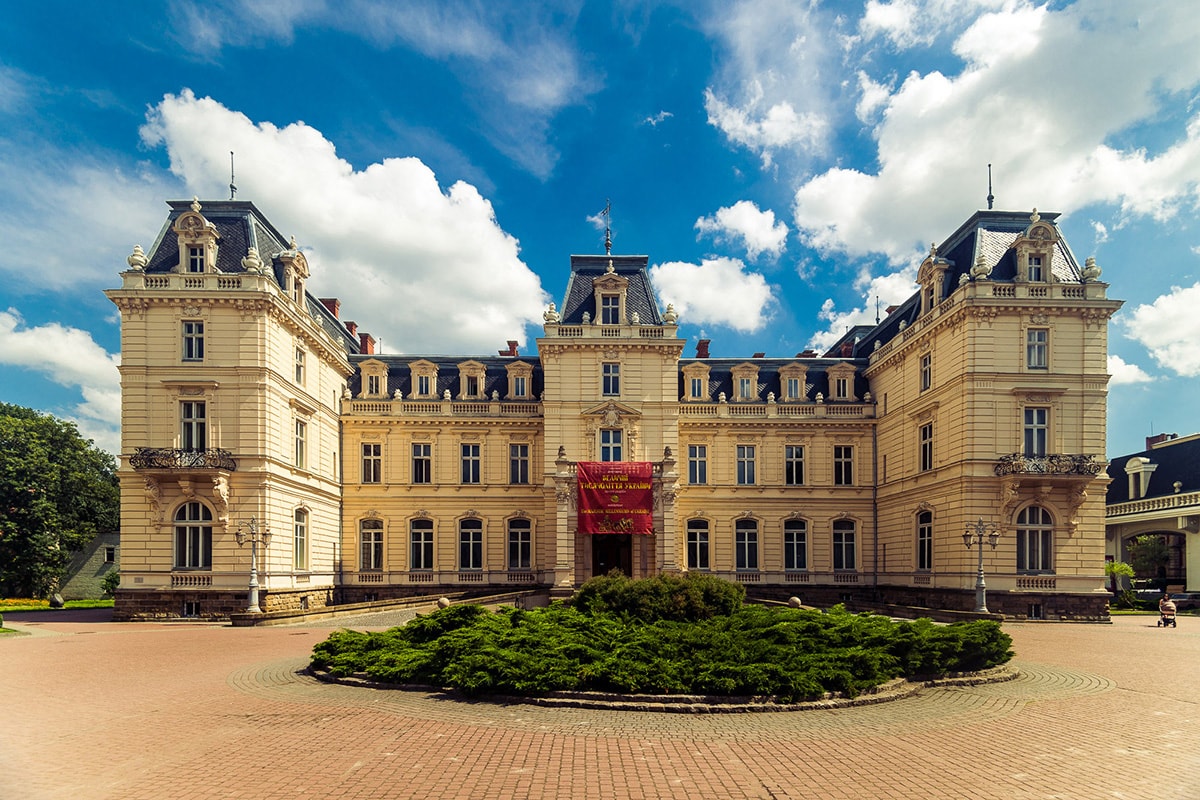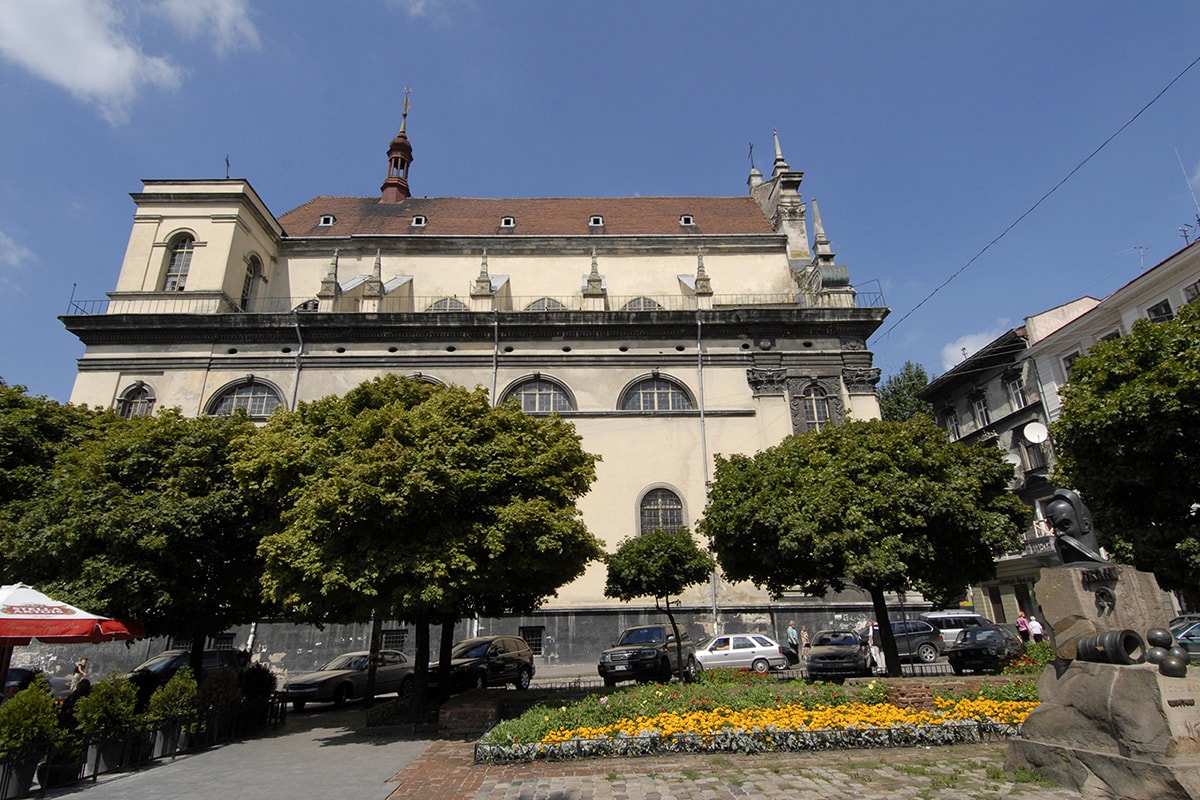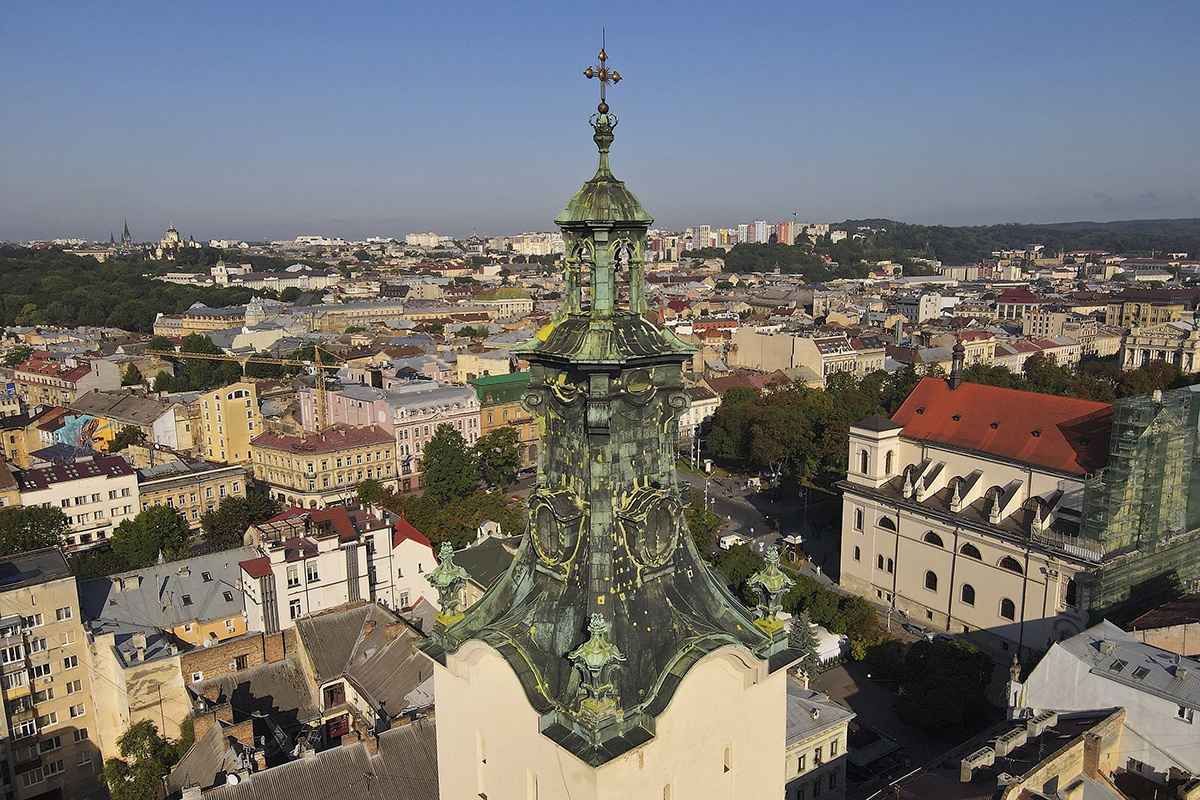
According to the stylistic features of late classicism, it can be argued that the monument was built in the period of 1860-1880, and before the Second World War played an important role in the life of the Jewish community of the city.
Initially, it was a building that also housed a casino. But in the second half of the 19th century, approximately in the 1860s and 1880s, local Jews bought several more houses on Zolota Street and rebuilt them in the style of late classicism, effectively merging several small houses into one large, elongated building along the Zolota street.
The corner townhouse was built in the early 19th century and forms the north-western corner of Rynok Square. The building has two floors with a cellar. The balconies of the second floor support the consoles. On the facade from the I. Franko street, an authentic balcony with a fence has been preserved to this day.
An interesting object of the kagal house was an arch or a through arch passage through the first floor of the house. It is known that the longest street in the central part of Brody at that time was the modern Virmenska Street, which started from the modern Shevchenko Street and went through this arched passage. In the 1960s, the authorities of that time decided that there should be no arched passage, and it was walled up. Thus, another fascinating architectural object in the central part of the city was lost.
The monument is now in communal and private ownership, and there are shops on the first floor.











